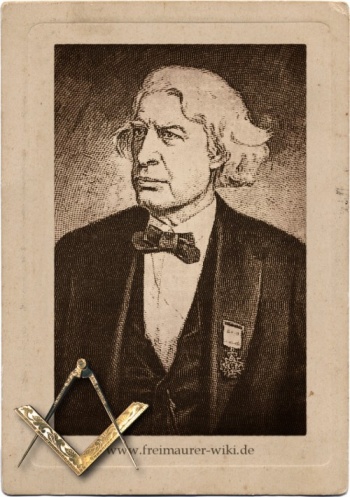En:The Baltimore Convention: Unterschied zwischen den Versionen
Oberg (Diskussion | Beiträge) Keine Bearbeitungszusammenfassung |
Oberg (Diskussion | Beiträge) KKeine Bearbeitungszusammenfassung |
||
| Zeile 19: | Zeile 19: | ||
[[Kategorie:English|Baltimoreconvention | [[Kategorie:English|Baltimoreconvention]] | ||
Aktuelle Version vom 14. September 2012, 22:45 Uhr
The Baltimore Convention
Source: Mackey's Encyclopedia of Freemasonry
A Masonic Congress which met in Baltimore, Maryland, on the 8th of May, 1843, in consequence of a recommendation made by a preceding convention which had met in Washington, District of Columbia, in March, 1842.
The Convention consisted of delegates from the States of New Hampshire, Rhode Island, New York, Maryland, District of Columbia, North Carolina, South Carolina, Georgia, Alabama, Florida, Tennessee, Ohio, Missouri, and Louisiana. Its professed objects were to produce uniformity of Masonic work and to recommend such measures as should tend to the elevation of the Order.
The Congress continued in session for nine days, during which time it was principally occupied in an attempt to perfect the ritual, and in drawing up articles for the permanent organization of a Triennial Masonic Convention of the United States, to consist of delegates from all the Grand Lodges. In both of these efforts it failed, although several distinguished Freemasons took part in its proceedings.
The body was too small, consisting, as it did, of only twenty-three members, to exercise any decided popular influence on the Fraternity. Its plan of a Triennial Convention met with very general opposition, and its proposed ritual, familiarly known as the Baltimore work, has almost become a myth. Its only practical result was the preparation and publication of Moore's Trestle Board, a Monitor which has, however, been adopted only by a limited number of American Lodges. The Baltimore work did not materially differ from that originally established by Webb. Moore's Trestle Board professes to be an exposition of its monitorial part; a statement which, however, was denied by Doctor Dove, who was the President of the Convention, and the controversy on this point at the time between these two eminent Freemasons was conducted with too much bitterness.
The above Convention adopted a report endorsing "the establishment of a Grand National Convention possessing limited powers, to meet triennially to decide upon discrepancies in the work, provide for uniform Certificates or Diplomas, and to act as referee between Grand Lodges at variance. Whenever thirteen or more Grand Lodges should agree to the proposition, the Convention should be permanently formed. "
Following the recommendation of the Convention, representatives from the Grand Lodges of North Carolina, Virginia, Iowa, Michigan, District of Columbia and Missouri met at Winchester, Virginia, on May 11, 1846. Only eight delegates appearing, the Convention adjourned without doing any business.
Another Masonic Convention was held at Baltimore on September 23, 1847, to consider the propriety of forming a General Grand Lodge. The following Grand Lodges had accredited delegates: North Carolina, Florida, Georgia, Mississippi, Arkansas, Maryland and the District of Columbia. Brother William P. Mellen, of Mississippi, presided, and Brother Joseph Robinson, of Maryland, was the Secretary. A Constitution was adopted and this was forwarded to the several Grand Lodges with the understanding that if sixteen of them approved the measure before January 1, 1849, it would go into effect and the first meeting there under would be held at Baltimore on the second Tuesday in July, 1849. But the Constitution failed to receive the approval of the required number of Grand Lodges and the project for a Supreme Grand Lodge came to a halt.

